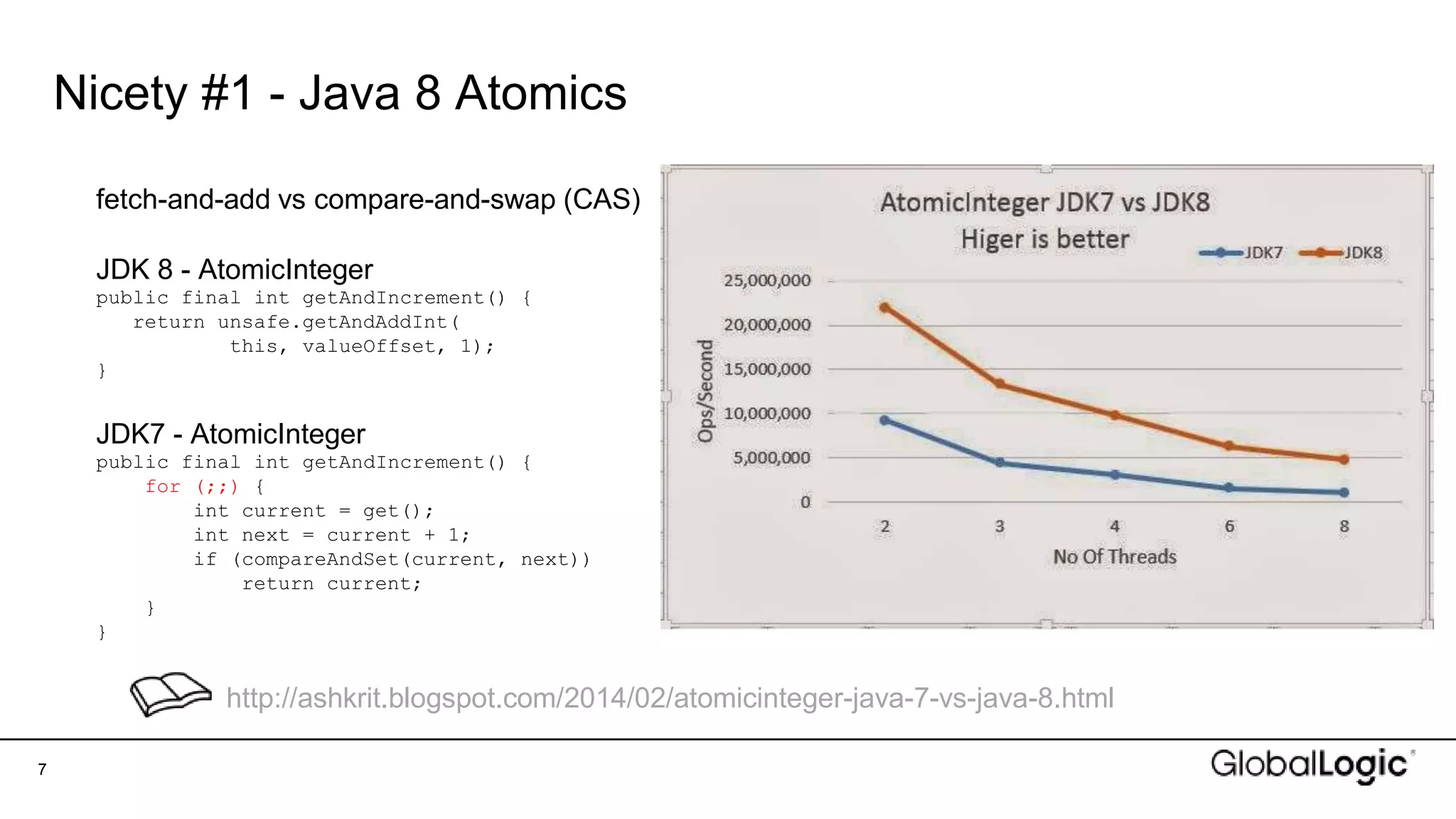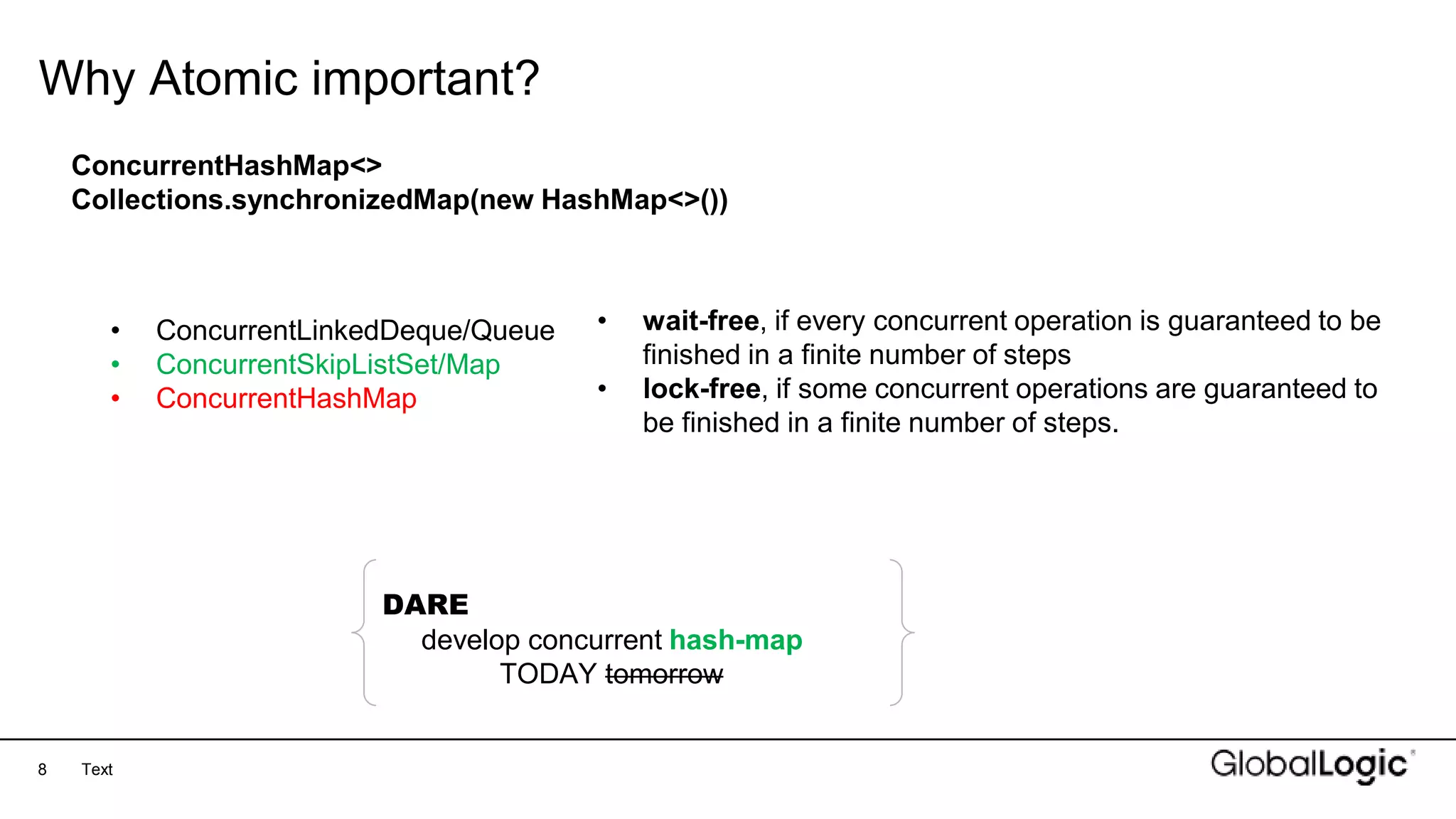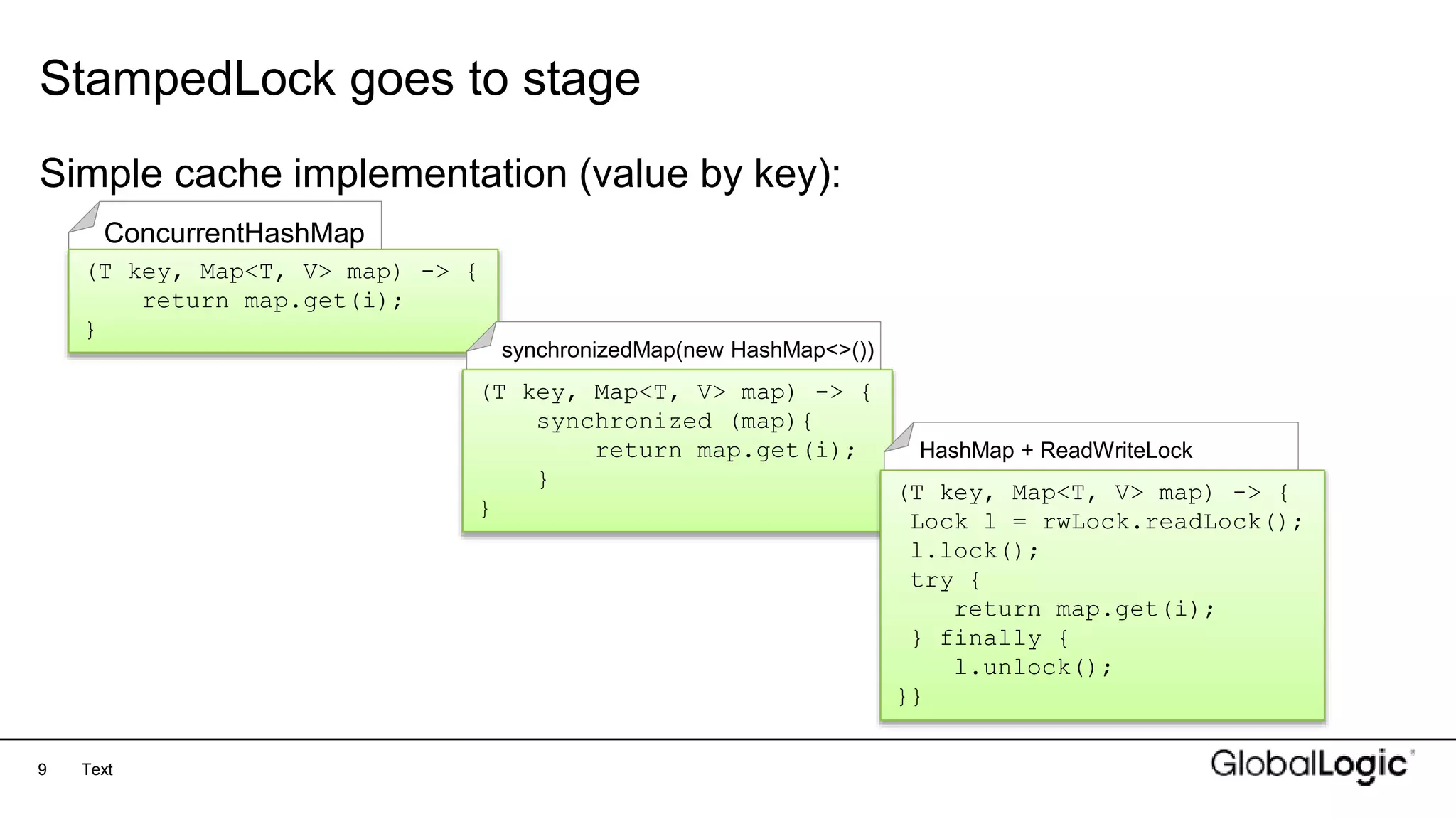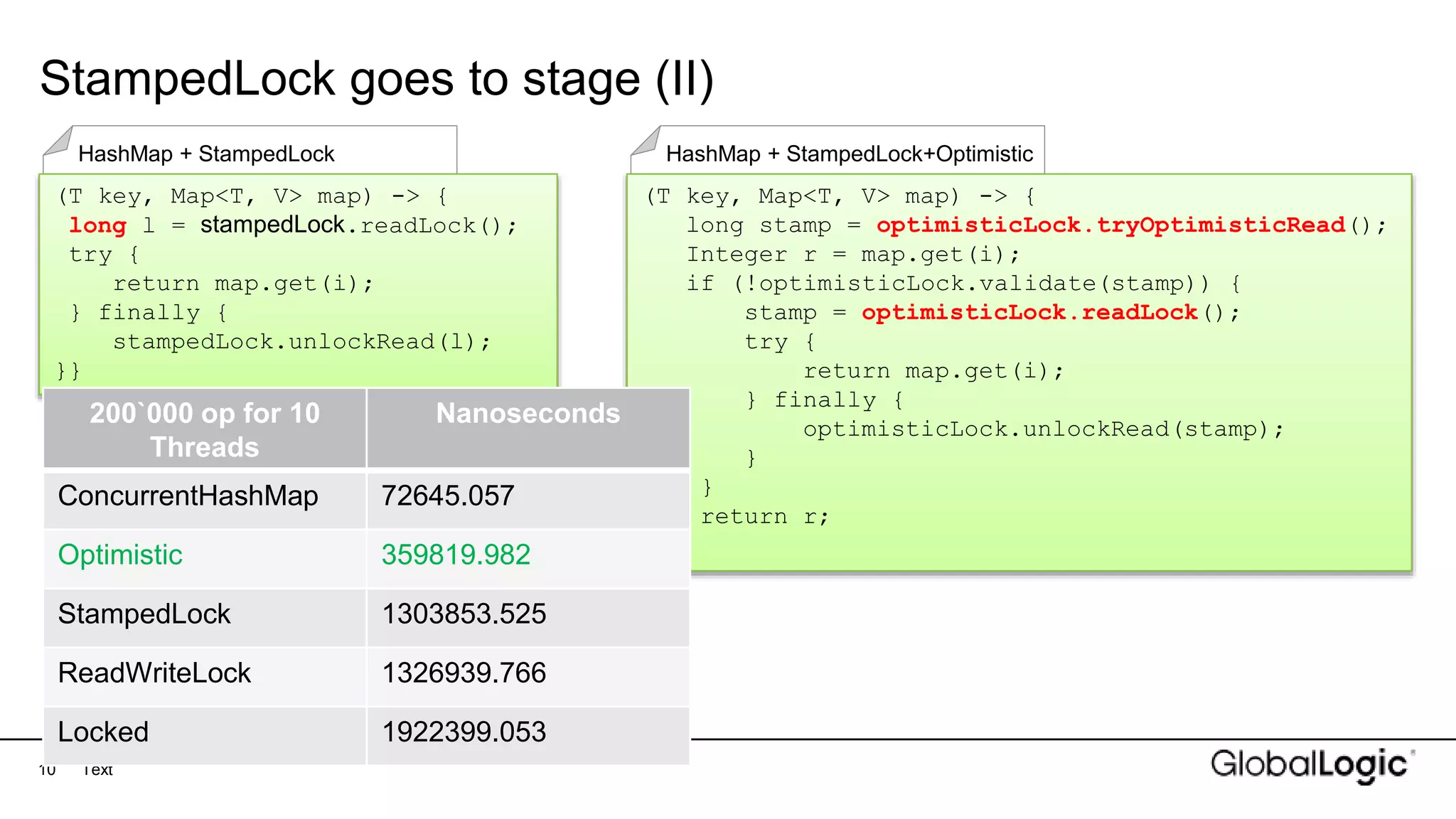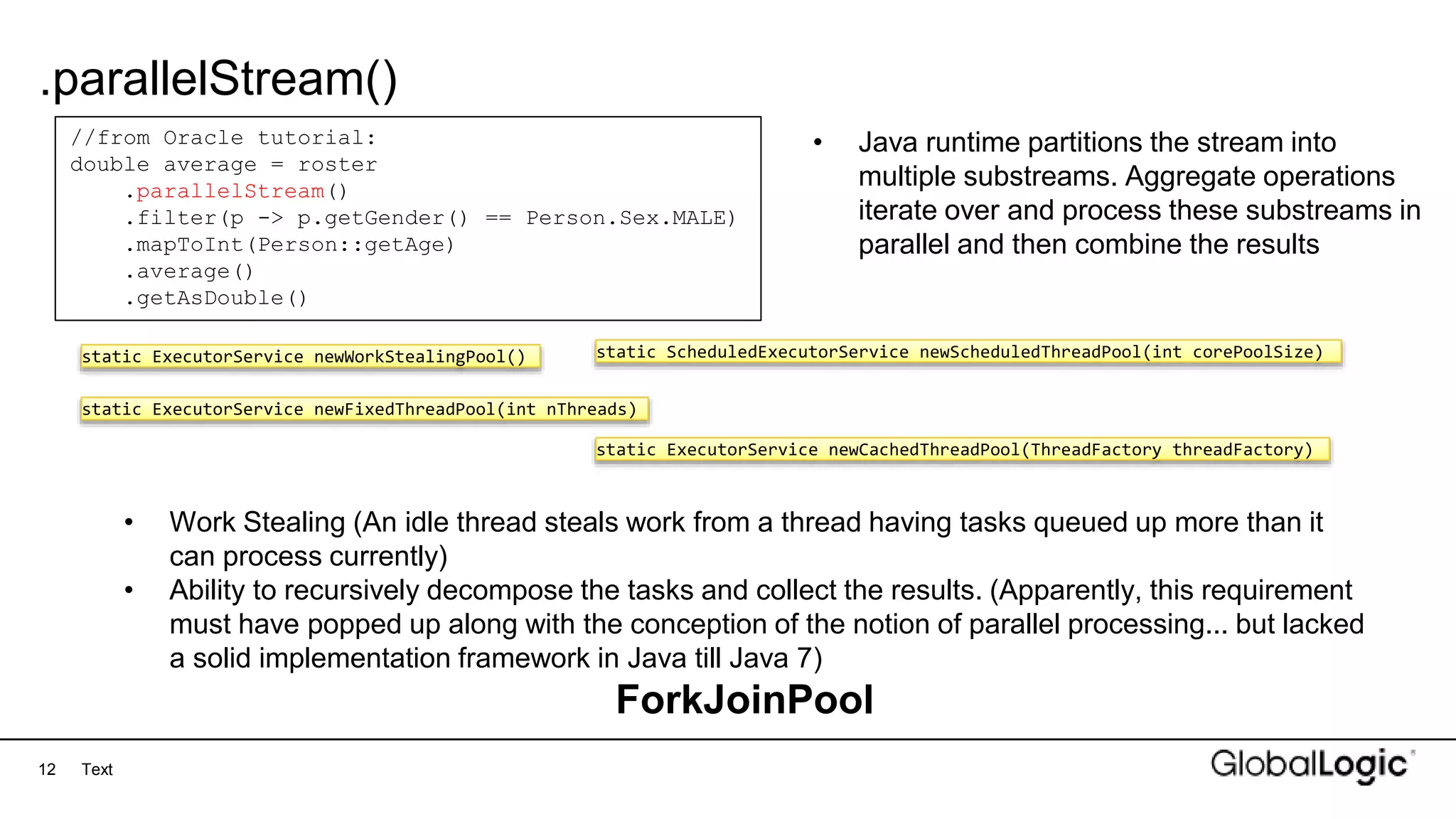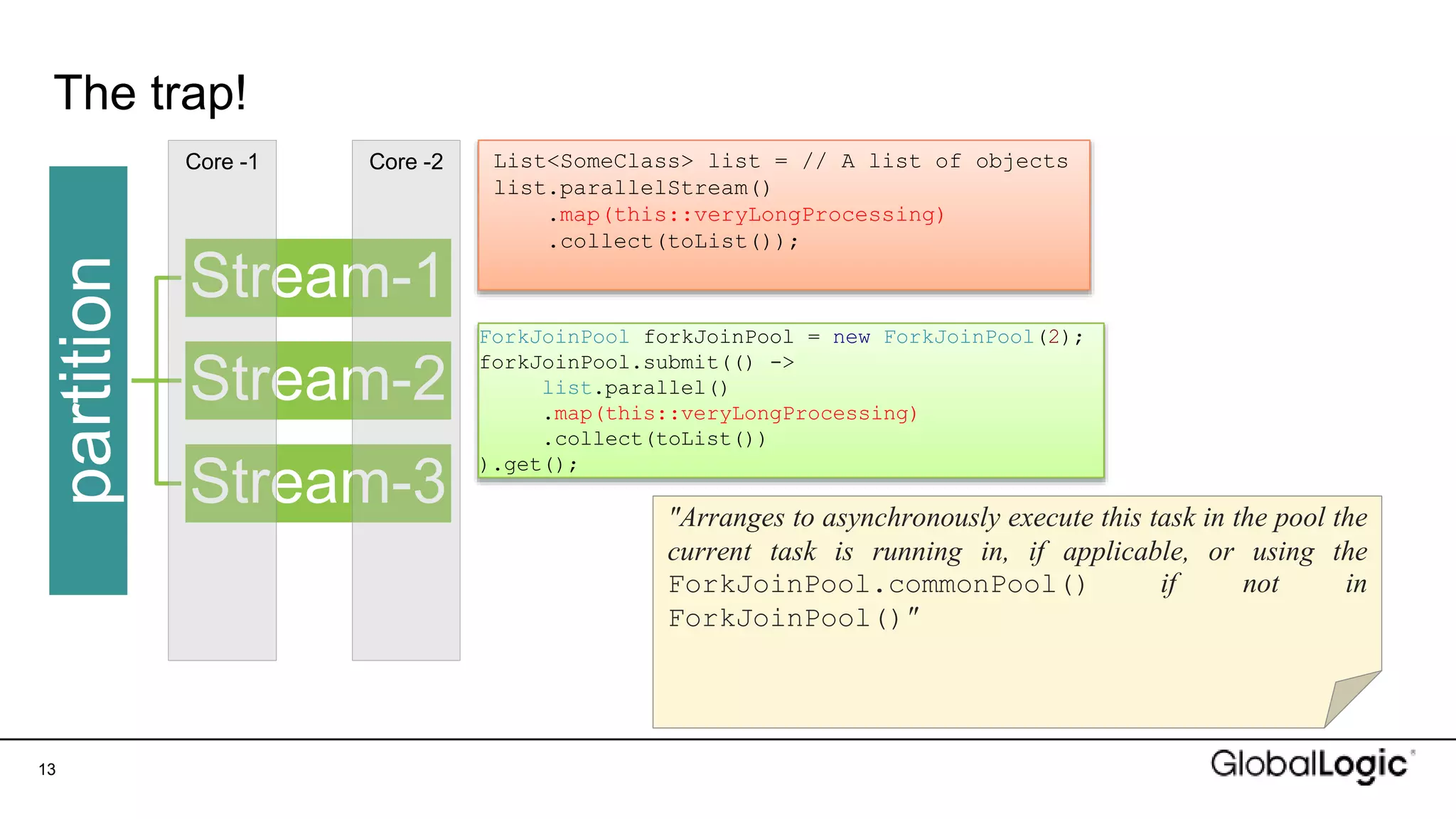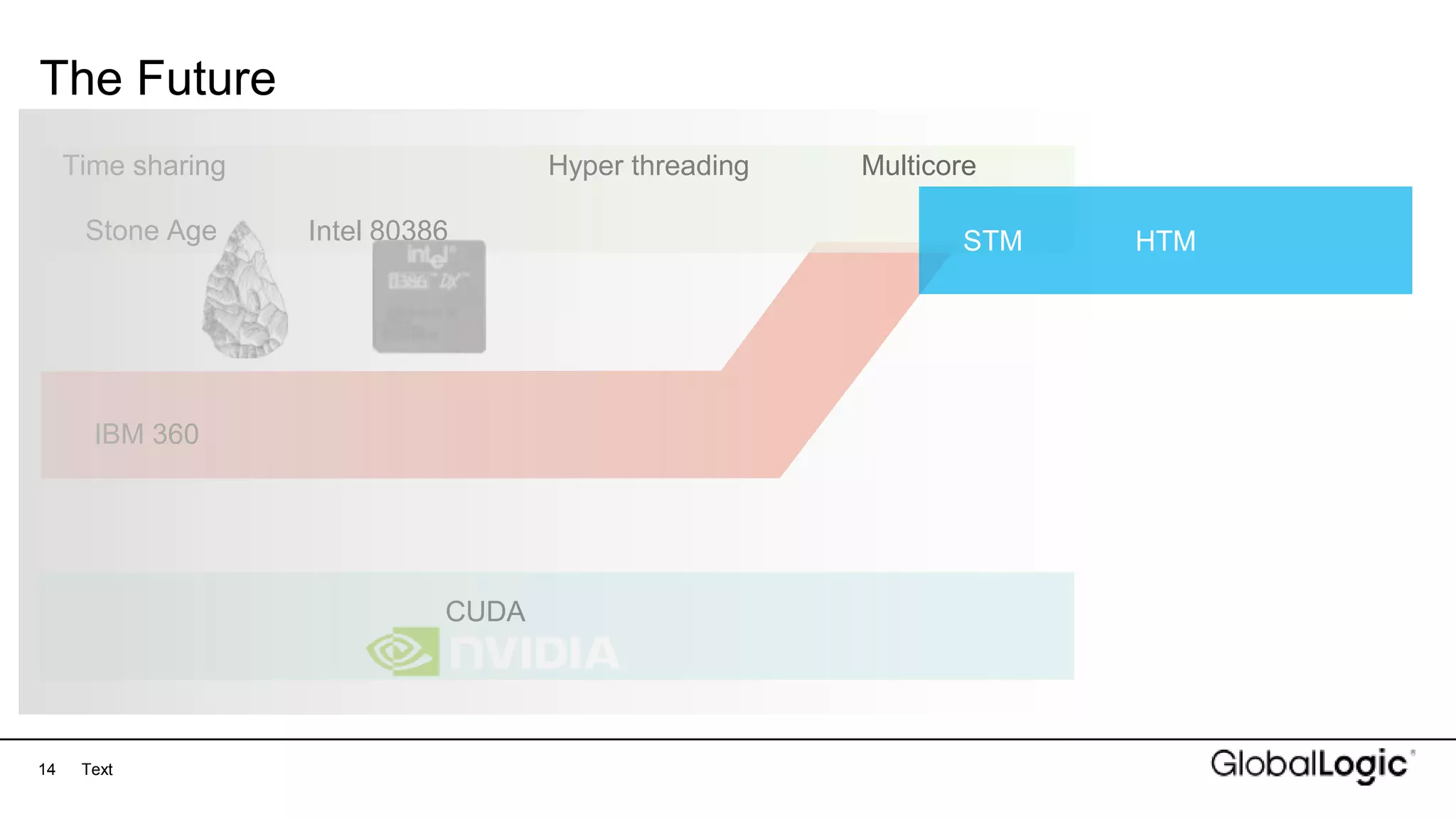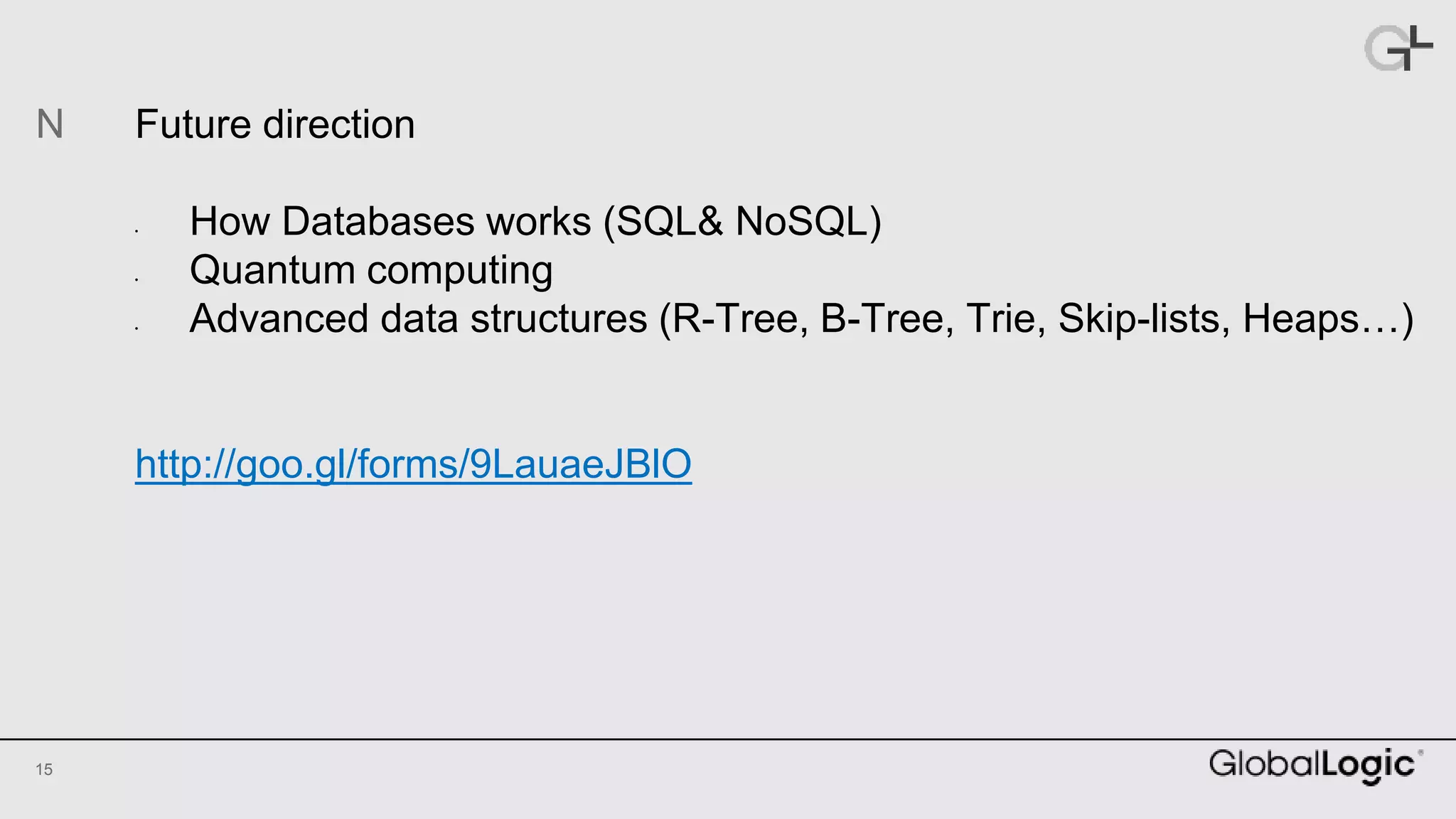The document discusses Java 8 multithreading advancements, highlighting atomic operations and the use of concurrent data structures such as ConcurrentHashMap and StampedLock. It explains the importance of atomicity and lock-free techniques in concurrent programming, alongside examples of parallel stream processing. Furthermore, it touches on future directions in database technology and advanced data structures.
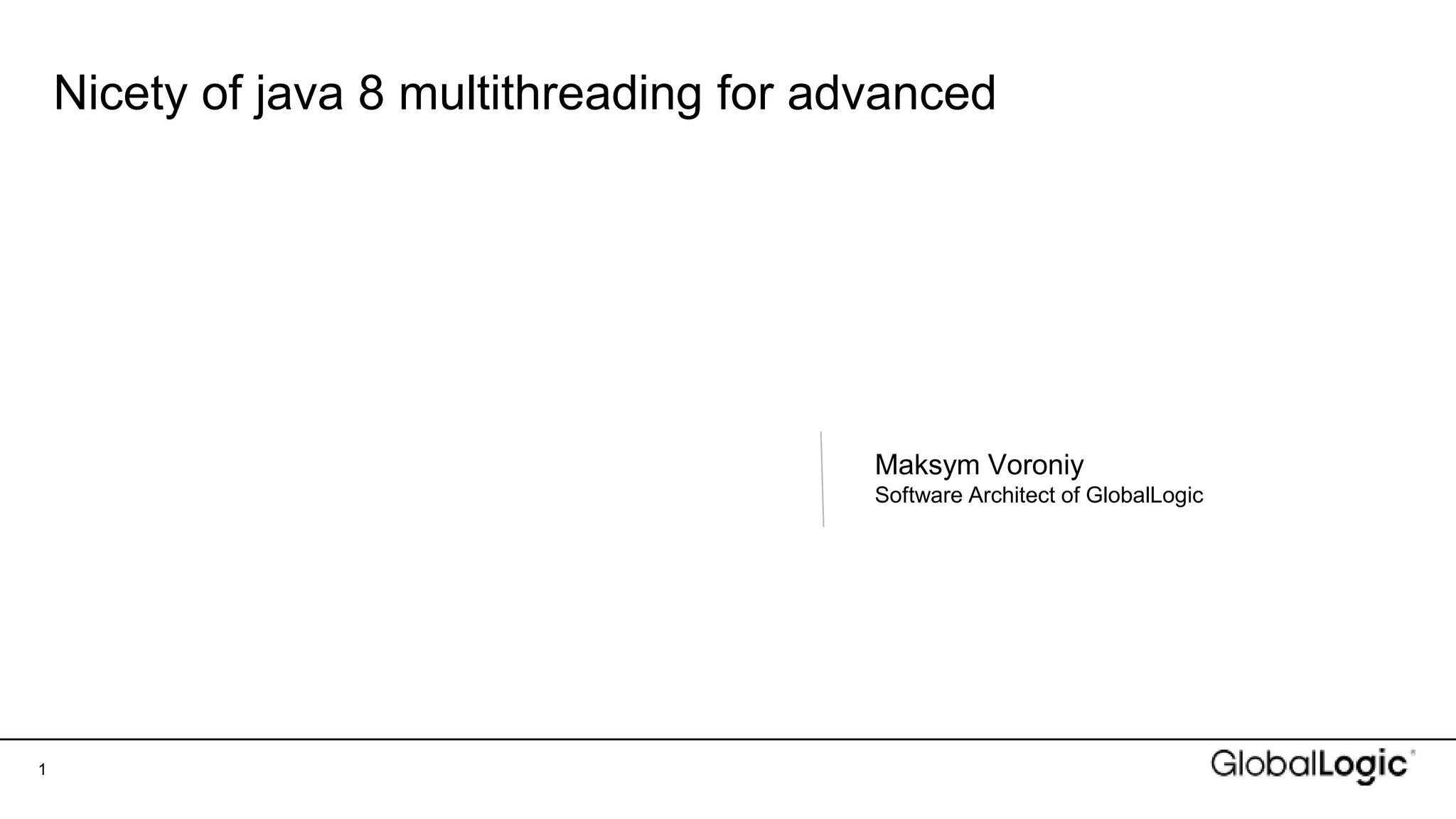

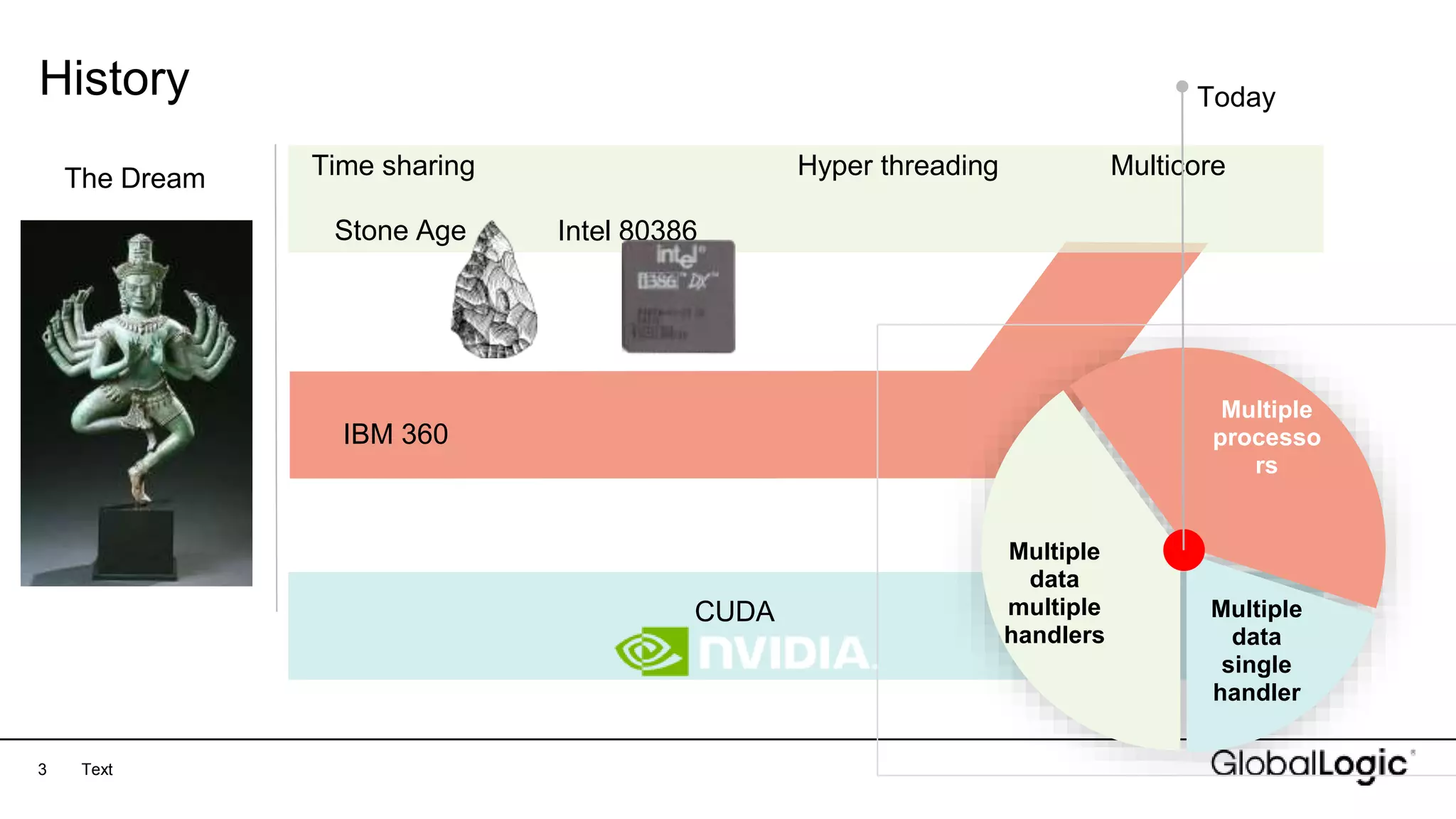

![5
Atomicity vs Consistence
static int a = 5;
a *= 3;
int b = 22;
b += a;
mov EAX, 5
mov ds:[a], EAX
mul 3
mov ds:[a], EAX
mov EBX, 22
add EBX, EAX;vs add EBX,ds:[a]
atomicity
consistence](https://image.slidesharecdn.com/nicetyofjava8multithreading-160330114137/75/Nicety-of-Java-8-Multithreading-5-2048.jpg)

